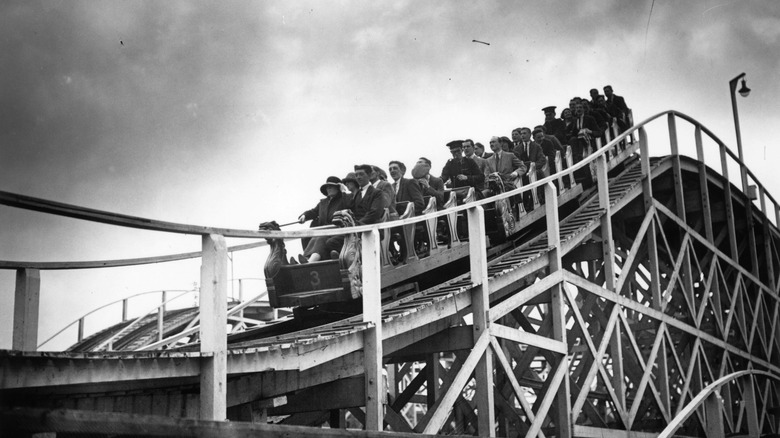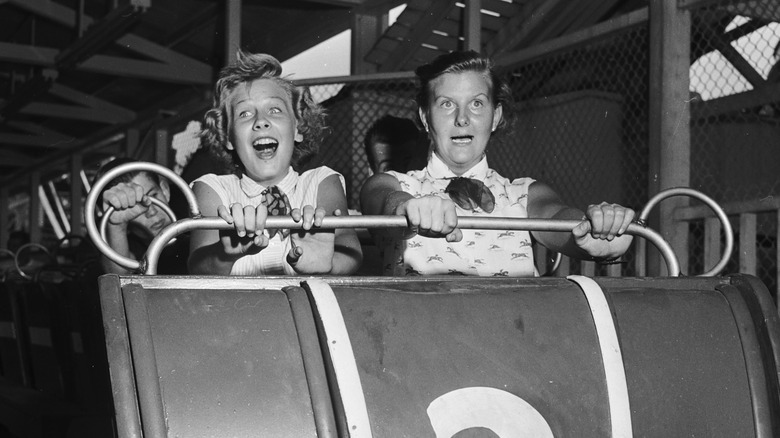The Real Reason The First U.S. Roller Coaster Was Created
On June 16, 1884, the Switchback Gravity Railway — the first roller coaster in the United States — opened to the public at Coney Island. The design was patented and built by inventor LaMarcus Adna Thompson, a devout Christian known as the "Father of the Gravity Ride." According to Theme Park Insider, visitors at Coney Island were charged 5 cents for a ride on the roller coaster, and it was so successful that Thompson earned about $600 daily (approximately $16,900 in today's money).
The first roller coaster was far different from the roller coasters that we have today. Passengers climbed a set of stairs and rode a cart facing outward instead of forward, so they could enjoy the magnificent view. The coaster was 600 feet long and had a height of 50 feet. It traveled at a speed of only 6 mph, and it didn't loop back to the beginning of the right. Instead, passengers would get out of the cart at the end of the ride and operators would turn the cart around to send it back to the start (via Coney Island History). It doesn't sound as exciting compared to modern roller coasters, but it was something new for people to try back then.
Why did LaMarcus Thompson build the roller coaster?
In the early 19th century, LaMarcus Adna Thompson witnessed how people flocked to gambling halls, saloons, brothels, and taverns to seek entertainment. As a staunch Catholic, he believed that these places were sinful and hedonistic in nature. And so, he wanted to create something that would entertain people without having them lose their virtues, as reported by Mental Floss.
Thompson was inspired by a railroad track located in Mauch Chunk, Pennsylvania. The track was 9 miles long and had a 665-foot drop. However, it wasn't for entertainment. The track was once used to transport coal easier from one place to another. He then began to work on creating the roller coaster. "Many of the evils of society, much of the vice and crime which we deplore come from the degrading nature of amusements ... to substitute something better, something clean and wholesome, and persuade men to choose it, is worthy of all endeavor," Thompson said (via Theme Park Insider).
The Switchback Gravity Railway was a success, and other theme parks noticed. Soon, they created their own versions of the ride, and as reported by USA Today, there were as many as 2,000 roller coasters all around the U.S. by the early 1900s.

